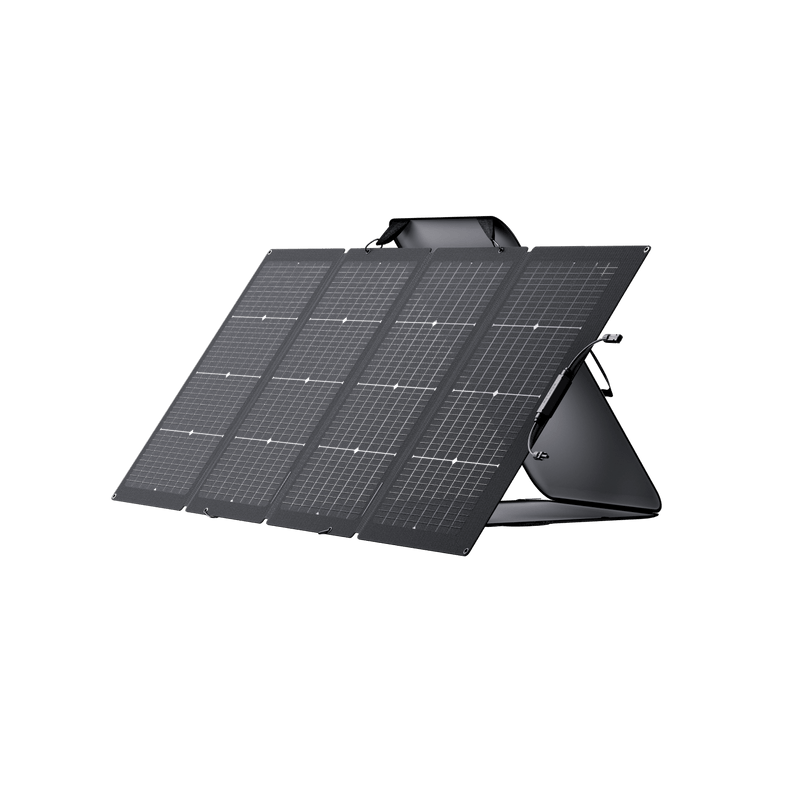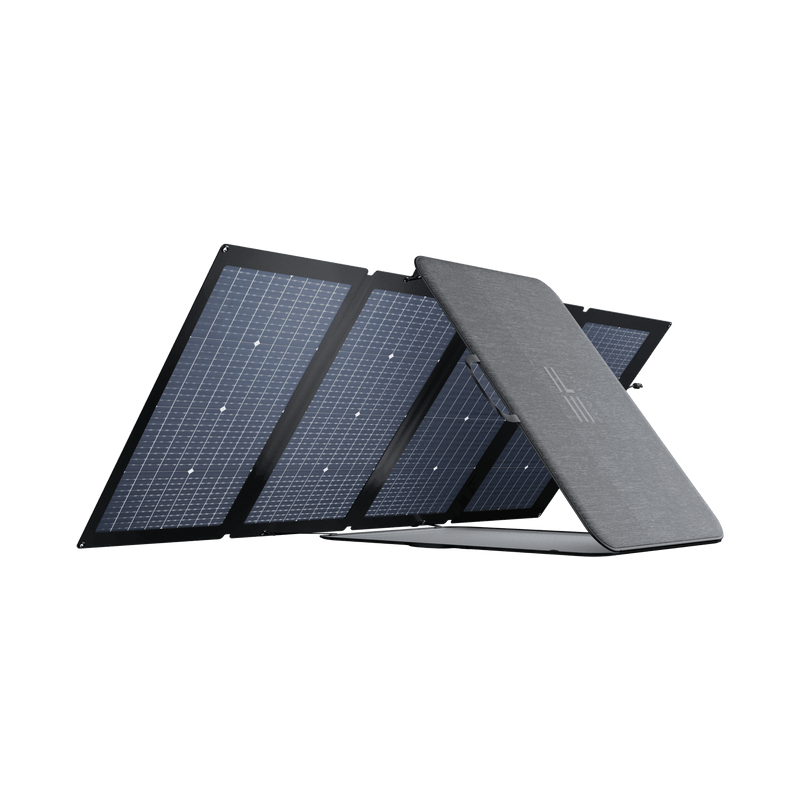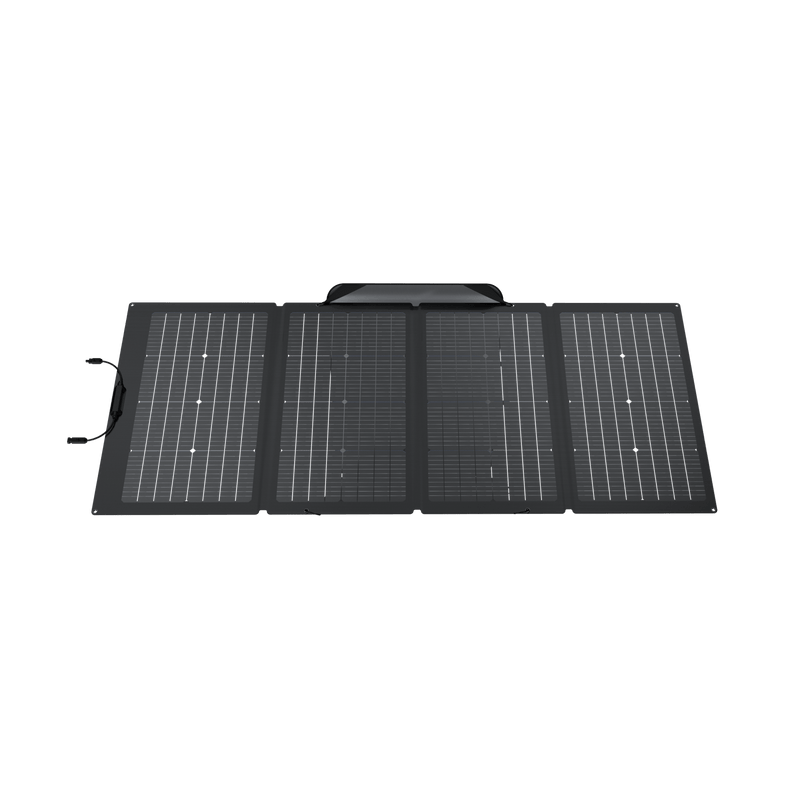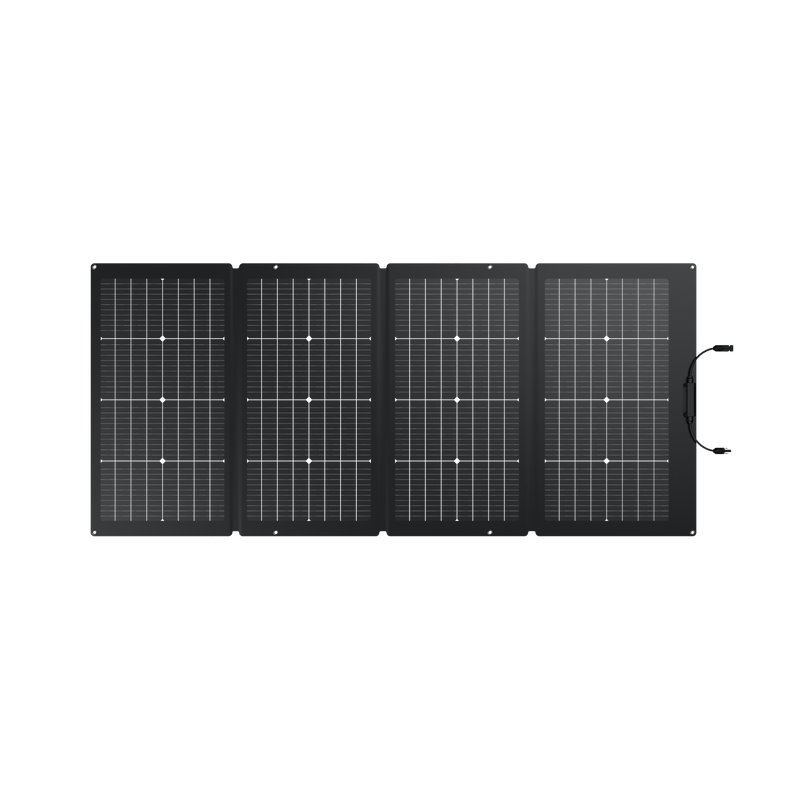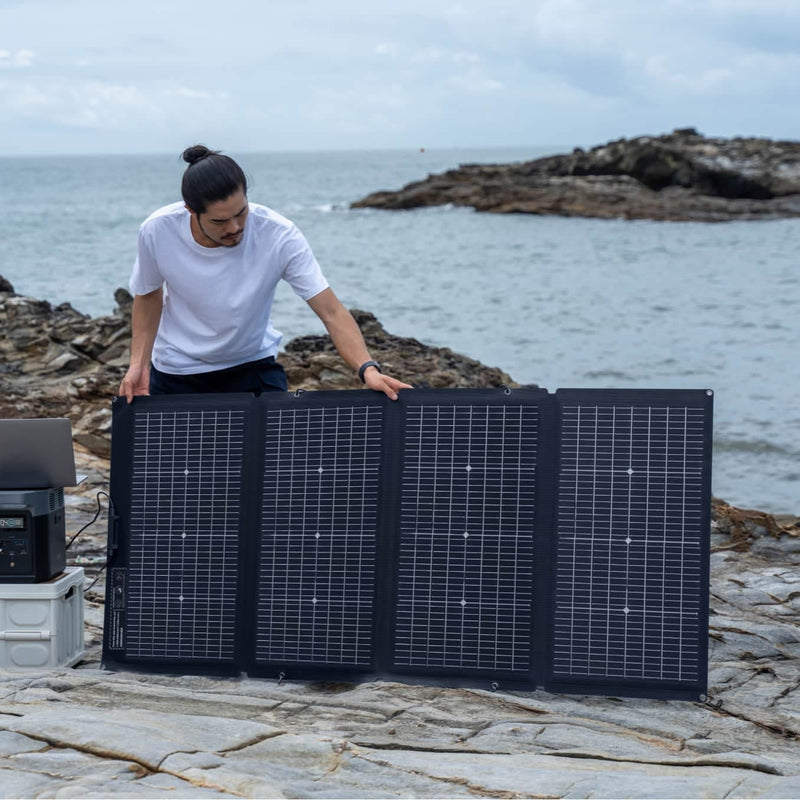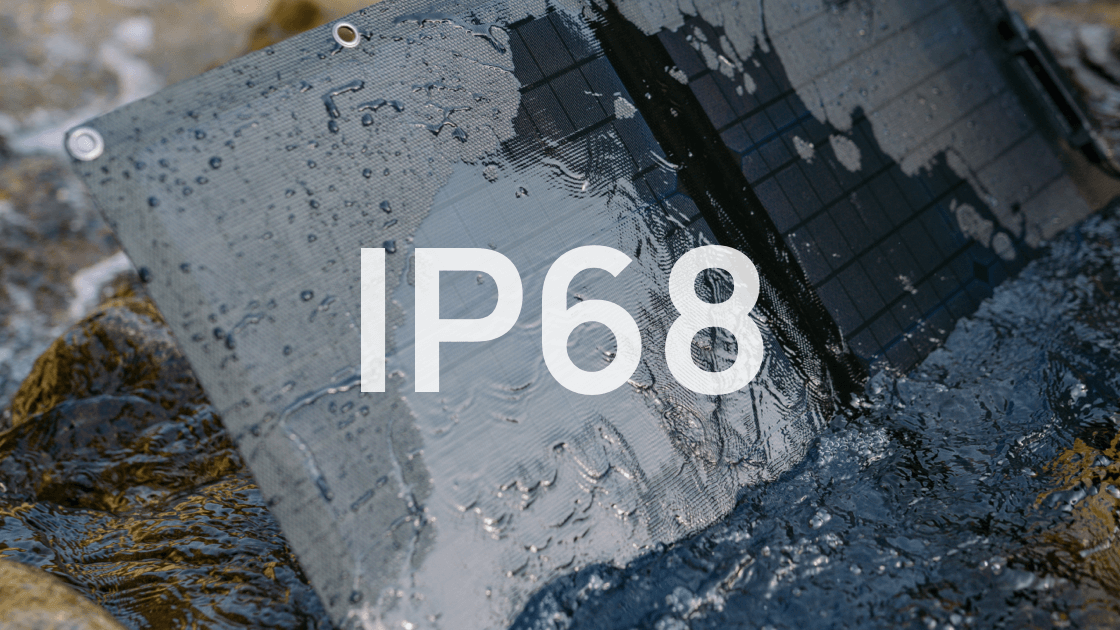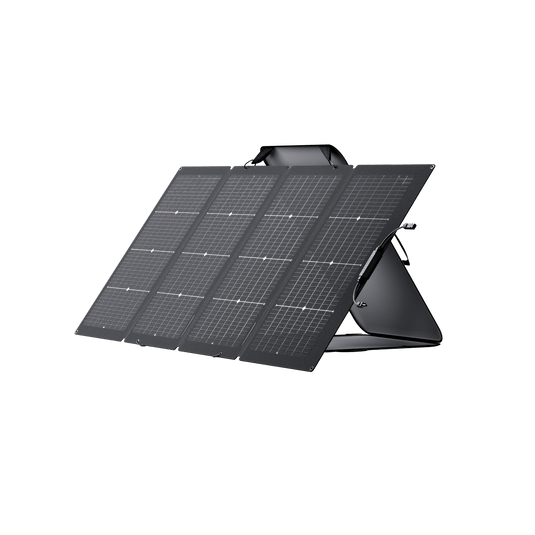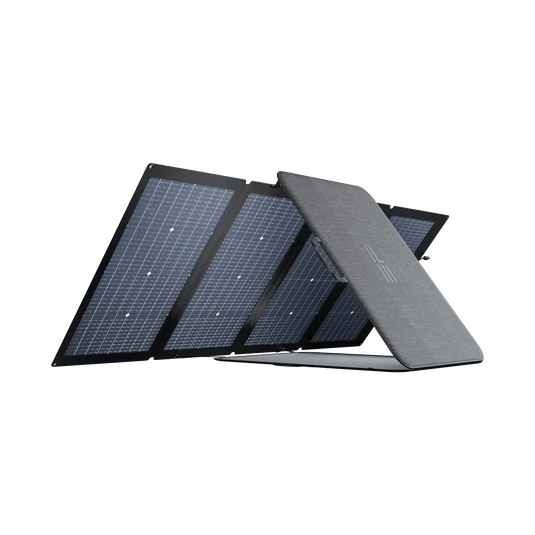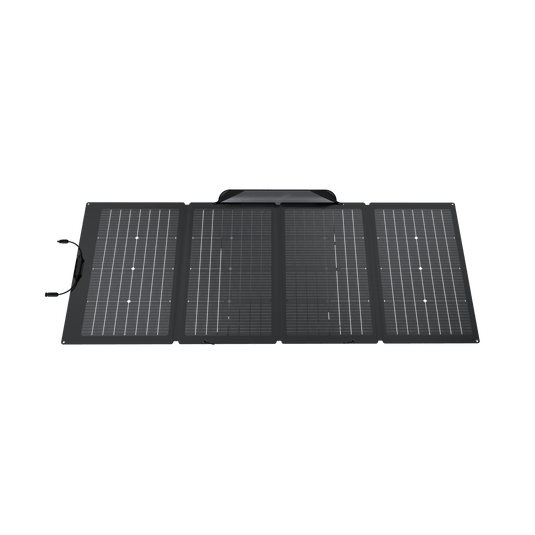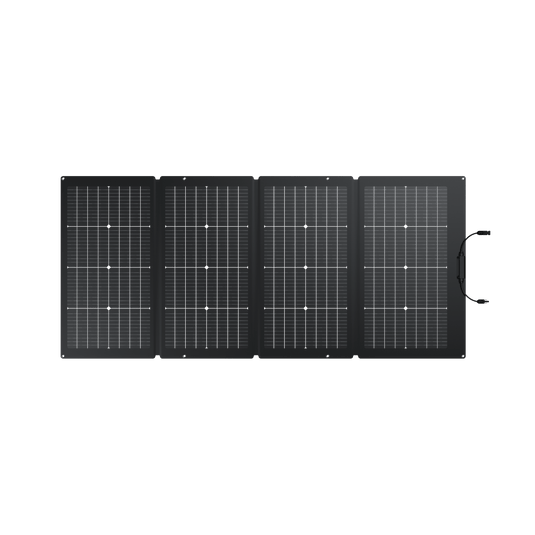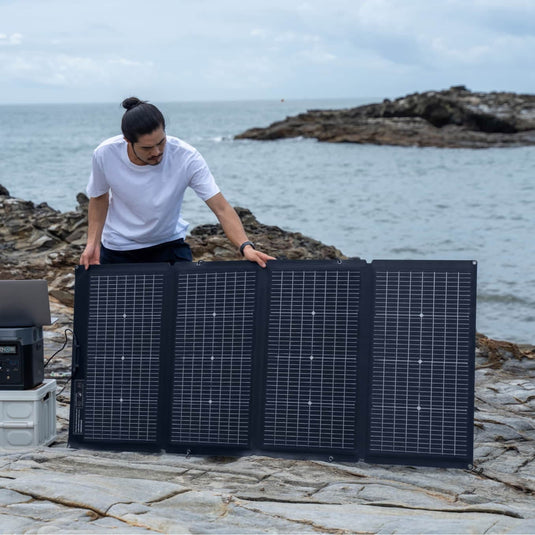EcoFlow 220W Bifacial Portable Solar Panel
Portable Solar Panels
Power your everyday appliances at home and off-grid with sustainable solar energy.
More energy with a two in one bifacial design.
EcoFlow’s 220W Bifacial Portable Solar Panel is two in one. With a 220W primary side, and a 155W side on the back for ambient light, you can capture up to 25% more solar energy and charge your portable power station even faster.
Built to last.
The thin, one-piece tempered glass design makes it five times tougher than comparable panels with half the thickness of traditional tempered glass. Capable of withstanding heat up to 300°F , it's safe to say it can resist the elements.
4X More Rear Side Heat Dissipation
<10% Power Degradation Over 10 Years
*Compared to standard solar panels.
Powerfully portable.
It's a portable solar panel designed from the ground up to be compact. 10% smaller than comparable 220W panels, it saves space with thinner tempered glass, and less surface area required for the same input.
More than a carry case.
It comes with its own carry case so you can take it anywhere. Once you arrive at your destination, simply unfold it and use it as a kickstand to get your sun exposure just right.
And it’s waterproof too.
We’ve raised the bar with this panel. It's completely water and dust-tight. Rain, wind or shine, your panel is safe with an IP68 waterproof rating.
Frequently Asked Questions
In most cases, it is normal for a solar panel not to deliver its full nominal power. Some of the reasons why this happens, as well as some suggestions for getting closer to the nominal power figure, are given below. 1. Light Intensity. The amount of light shining on the panel will result in fluctuations to the power output. You are more likely to achieve nominal power output figures closer to those obtained under test conditions when using the product on a clear day during the midday sun, than when using the product in the morning or later in the afternoon. Weather conditions will also affect the amount of sunlight that shines on the panel. For example, you are much less likely to achieve the figures for nominal power in hazy, cloudy or rainy conditions. 2. Surface Temperature. The temperature of the solar panel surface will also affect the amount of power generated. The lower the surface temperature of the panel, the more power will be produced. For example, solar panels generate more power when used during the winter than during the summer, and this is completely normal. Solar panels generally reach temperatures close to 60°C (140°F) during summer. This reduces nominal power by 13%, despite the higher levels of light shining on the panel. 3. Sunlight Angle. In optimal light conditions, the sun's rays should remain perpendicular to the surface of the panel for best performance. Power output is only marginally impacted by sunlight hitting the panel within 10° either side this 90° angle. 4. Panel Shading. The surface of the solar panel should not be shaded during use. Shading caused by shadows, foreign objects and glass can all greatly reduce power output. Performance Issues Caused by Malfunctioning Panels: If the panel still isn't generating power or its output remains far below expected nominal power figures after addressing the issues above, there may be an issue with the panel itself. Please contact Customer Support for assistance.
This depends first and foremost on weather conditions. Generally speaking, on a clear day with no clouds in the sky, sunlight hitting the panel at a 90° angle usually generates 160W–180W of power in the 220W panel. (Current light conditions are normally 800W–900W/m2 (74.3W–83.6W/ft2) with a panel temperature of 50°C (122°F) under test conditions. Nominal power ratings are based on 1000W/m2 (92.9W/ft2) in AM1.5 conditions with a panel temperature of 25°C (77°F) under test conditions. Power output figures close nominal values were normally observed in the midday sun during the winter.)
The operating temperature of the Bifacial Solar Panel is -20°C–85°C (-4°F–185°F). The panel should be folded into its original shape and stored in its Protective Case (Kickstand), which provides sufficient protection for the product. To extend the service life of the panel, ensure that the product is not exposed to external forces/impacts when not in use. The solar panel itself is made of glass and must not be dropped, pierced, bent, or sat on. These actions may break the glass and render the panel unusable. Any such damage will not be covered by the free warranty.
The front side of the Bifacial Solar Panel has a junction box. This side of the panel generates power by being positioned perpendicular to the sun's rays. Since the rear side of the panel faces away from the sun, it does not generate electricity in the usual way. Generally speaking, the rear of the panel uses ambient light to increase the overall performance of the product by up to 5%-25%. This figure is higher if mirrors are used, or when ambient light levels are high. Using the product with the rear side of the panel facing the sun generates 80% of the power when compared to using the front side. Using the panel in this way does not have a negative effect on the product.
Yes, but only certain types. The power station used must be compatible with MC4 standards in order to work properly. In addition, other brands of power station may not offer the same levels of compatibility as EcoFlow-branded power stations, may have lower nominal power ratings, and may not offer the same levels of performance.
Yes, but this is not recommended. While the voltages of the two panels are identical, the current ratings are not. This means that when the panels are connected in series, the current will be limited to that of the 110W panel and the full performance potential of the 220W panel cannot be released, resulting in a 1+2<3 scenario. Please purchase panels of the same size if you intend to connect multiple panels in series.
Yes, but this is not recommended. 220W solar panel have a maximum current rating of 12A. Though these panels can be connected in parallel, DELTA and RIVER series power stations only support a maximum current of 12A. Parallel connections increase power output by doubling the current, but connecting the panels in this way would result in a 1+1=1 scenario whereby the current is limited to 12A by the connected devices. We do not recommend connecting the panels in parallel, unless you use a different brand of power station with an input current of 20A or above.
Rated Power
220W Front Side/155W Rear Side
Cell Type
Monocrystalline Silicon
Dimensions
82*183*2.5cm (32.3*72.0*1.0 in)
Open Circuit Voltage
21.8V (Vmp 18.4V)
Short Circuit Current
13A (Imp 12.0A) Front Side/ 8.8A (Imp8.4A) Rear Side
Weight (Solar Panel)
Approx. 9.5kg (20.9lbs)
Use left/right arrows to navigate the slideshow or swipe left/right if using a mobile device
